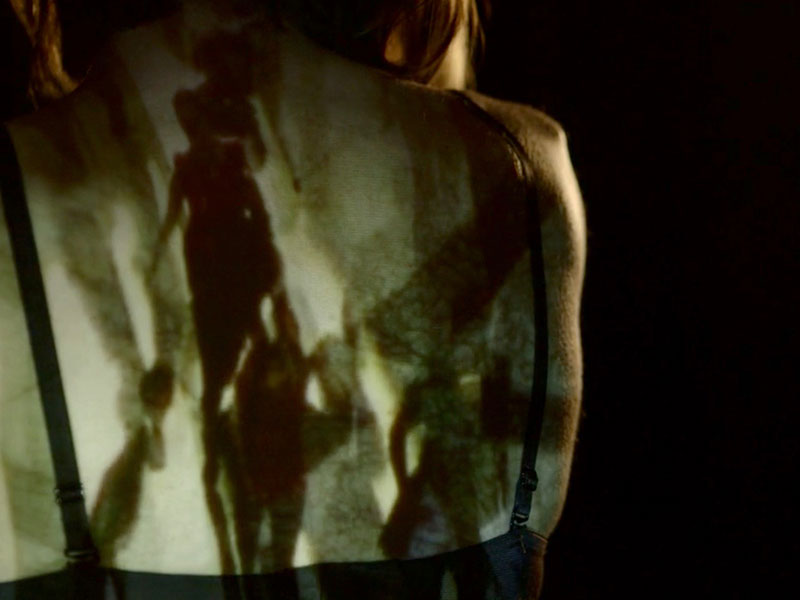The Crossing is a multi-screen and 2D screen interactive exhibition, which provided new interpretations and understanding of the black-market economy of sex trafficking through the journey of a trafficked woman. The emotionally charged project investigates the exploitation of hope and the black market economy of human trafficking through the story of a young girl sex trafficked into an organised industry who use the ‘lover boy’ technique to entrap their targets. Her story unfolds through interconnected screens with perspective shifting visuals and an intimate, binaural sound design. The project itself sits within an increasingly complex climate of hardening public opinion; moral self-questioning and a $150 billion dollar world trade in people. As such the film takes as its starting point the concept of ‘hope’ and its gradual unfurling reality into an exploitation of trust to perpetuate a violent and organised industry trading in 21 million people, a third of which are children. The result is an intense, exploration of the destructive consequences of human trafficking through a heightened audio-visual experience.
The aim of the project was is to raise awareness of the techniques used by traffickers particularly those most vulnerable and targeted (14-18 year olds) and place in context the sheer scale (over 40 million people in slavery worldwide, 21 million trafficked) of the economics driving the black market trafficking ‘industry’. This project aims to highlight the long lasting impact of trafficking on the survivor. Cumulatively, through its visibility the project supports the work of various stakeholder to counter trafficking.
Trailer
In order to reach a wide ranging audience, the project was designed to be experienced on a number of platforms, utilising narrative fragments underpinned by an immersive sound design which allowed the form to be adapted to physical and virtual screening and exhibition spaces. The production adopted novel approaches to storytelling through the use of existing and emerging creative technologies, including visual effects, binaural sound design and the use of Unmanned Aerial Vehicles (UAV).
Defined as ‘adding an amazing piece of work to this battle against the worst of crimes’ The Crossing has won a number of awards and commended for being ‘ambitious and deftly executed’ a project ‘that pushes the boundaries of film and communication’ (AHRC Research Film of the Year) and ‘an outstanding example of impactful practice research’ (BAFTSS,2018).
The project was a collaboration between Dr Shreepali Patel (StoryLab), Luis Aujze (Computer Games Art), Prof. Rob Toulson (Westminster University). Additional collaborators include Colin Burrows (Special Treats) The Helicopter Girls, Nicola Daley ACS, John Renney, Ben Cooper-Bland (Kickline Films), Andrea Bortolaso (Lupo Productions), Reeta Varpama and patron Emma Thompson.
Statistics and definitions can be found here.
Teaching and Education Resources
The full-length film, The Crossing teaching resources, behind-the-scenes videos, and additional project resources can be found here.
Reflections
Dr Lucy Morley Williams: The Crossing: Reflections on Content, Form and the Representation of Lived Experiences – pdf
Feedback from screenings and exhibitions
Beautiful, powerful and eye-watering! Tragedy framed intimately.
‘It has been a powerful call to our attention to this unknown dark world’.
Visceral soundscape affects me on a bodily level, hits my gut, makes my toes curl.
Very powerful and disorientating.
I felt like she was part of me. And I was scared and sad for her.
I didn’t realise the extent of the issue and the huge financial gain made by the people behind it.
I was absolutely stunned, horrified and felt all sorts of physical effects whilst in the gallery – goosebumps, tears, lump in throat, breath catching. It will stay with me.
The movement of the film in relationship to myself made me feel like I was moving through the story.
Really stunning and eye-catching, vivid and immersive experience.
An excellent film that avoids mawkishness and foregrounds personal testimony.
Links
- UNODC (United National Office on Drugs and Crime)
- Palermo Treaty
- Human Trafficking Foundation
- Antislavery Usable Past
- Unchosen
- Visual Memories of Migration
- ASPERA Annual Conference
- AHRC Research Film of the Year
- Ways of Machine Seeing – Digital Methods Workshop.
- Crossing Roads with PIER
- We Are Moving Stories
- Trailblazing Women
- AHRC Common Ground and Blog Post
- New Routes, Old Roots
- The Conversation
- British Association of Film, Television and Screen Studies
- Media, Communication and Cultural Studies Association

